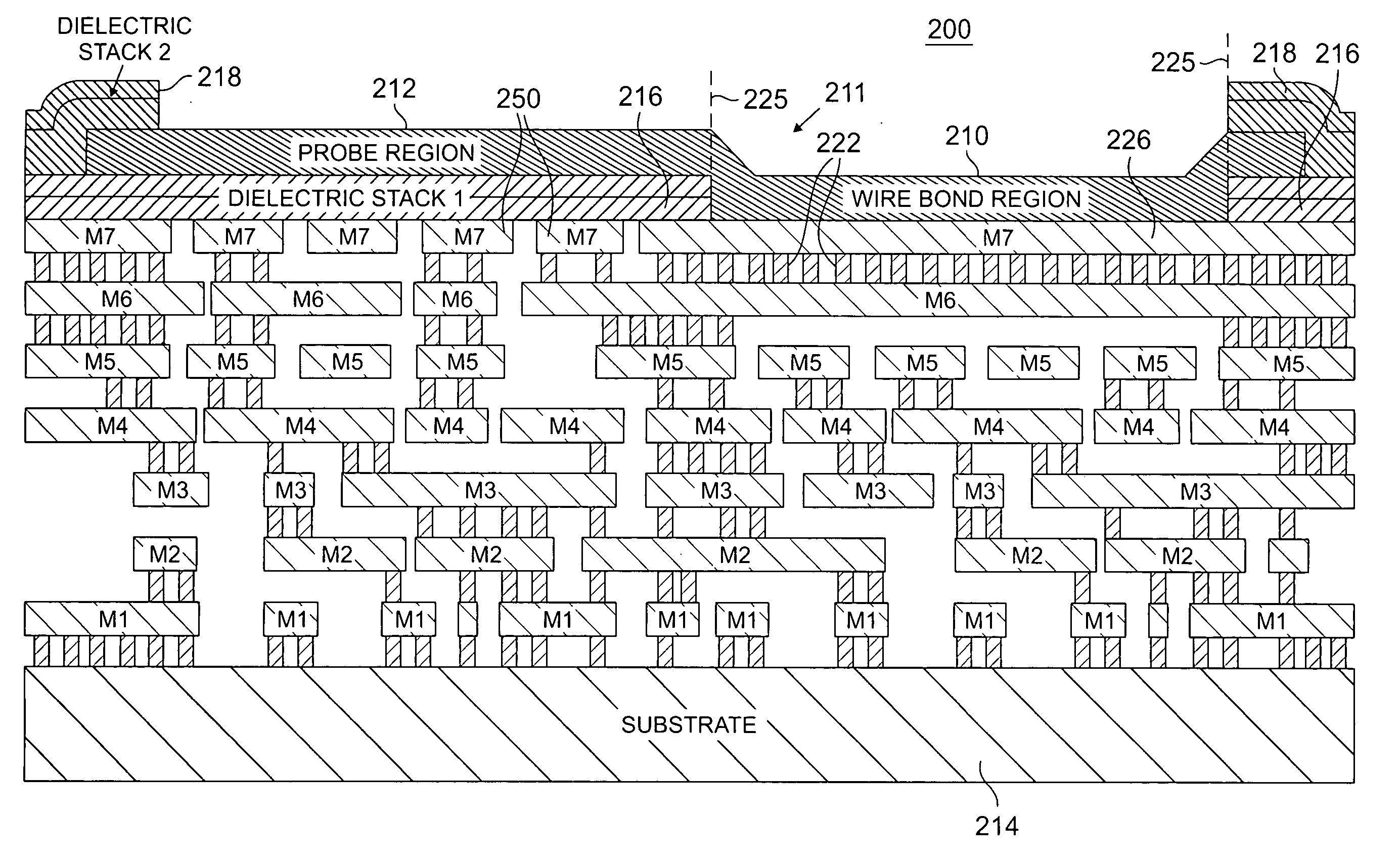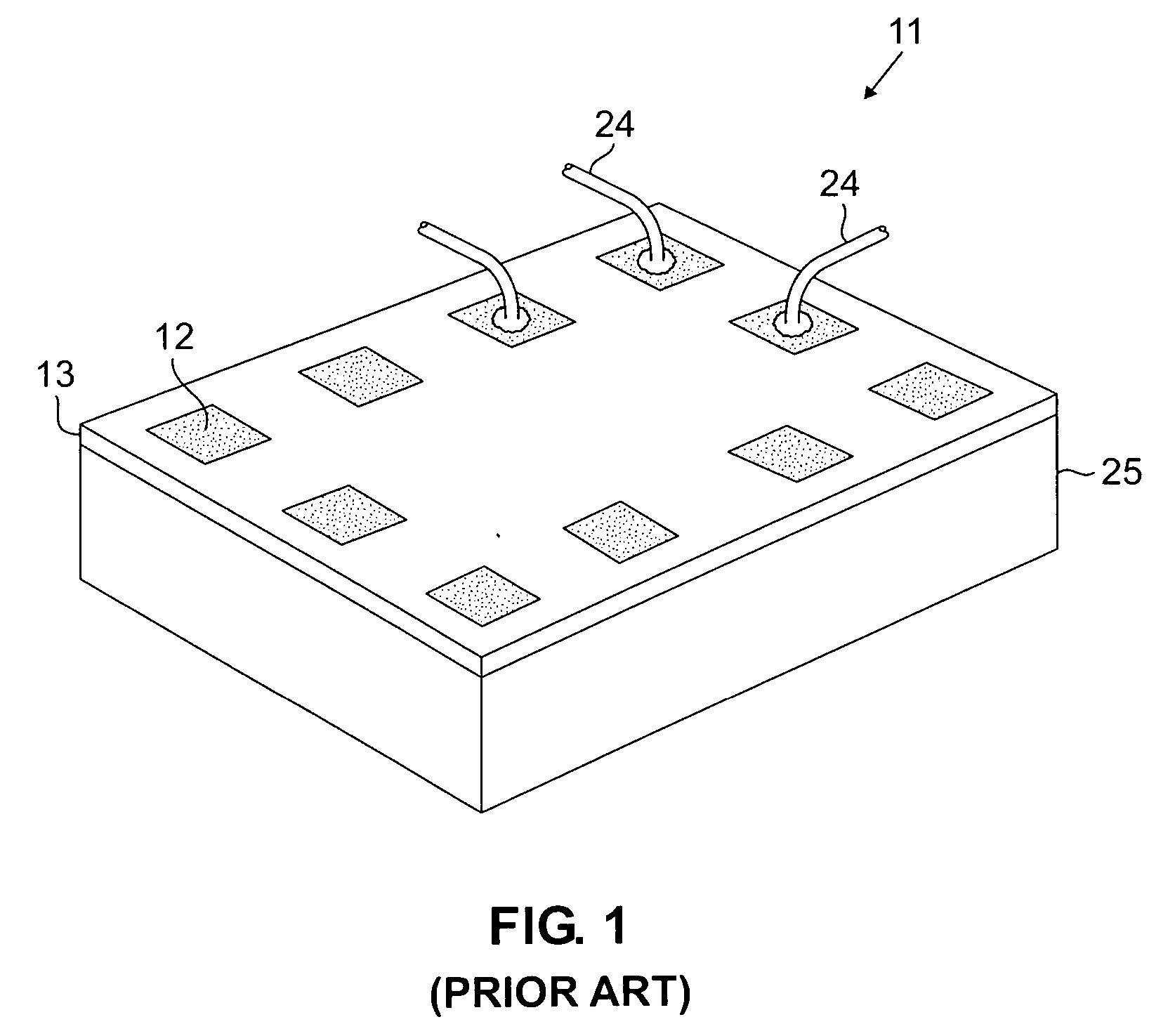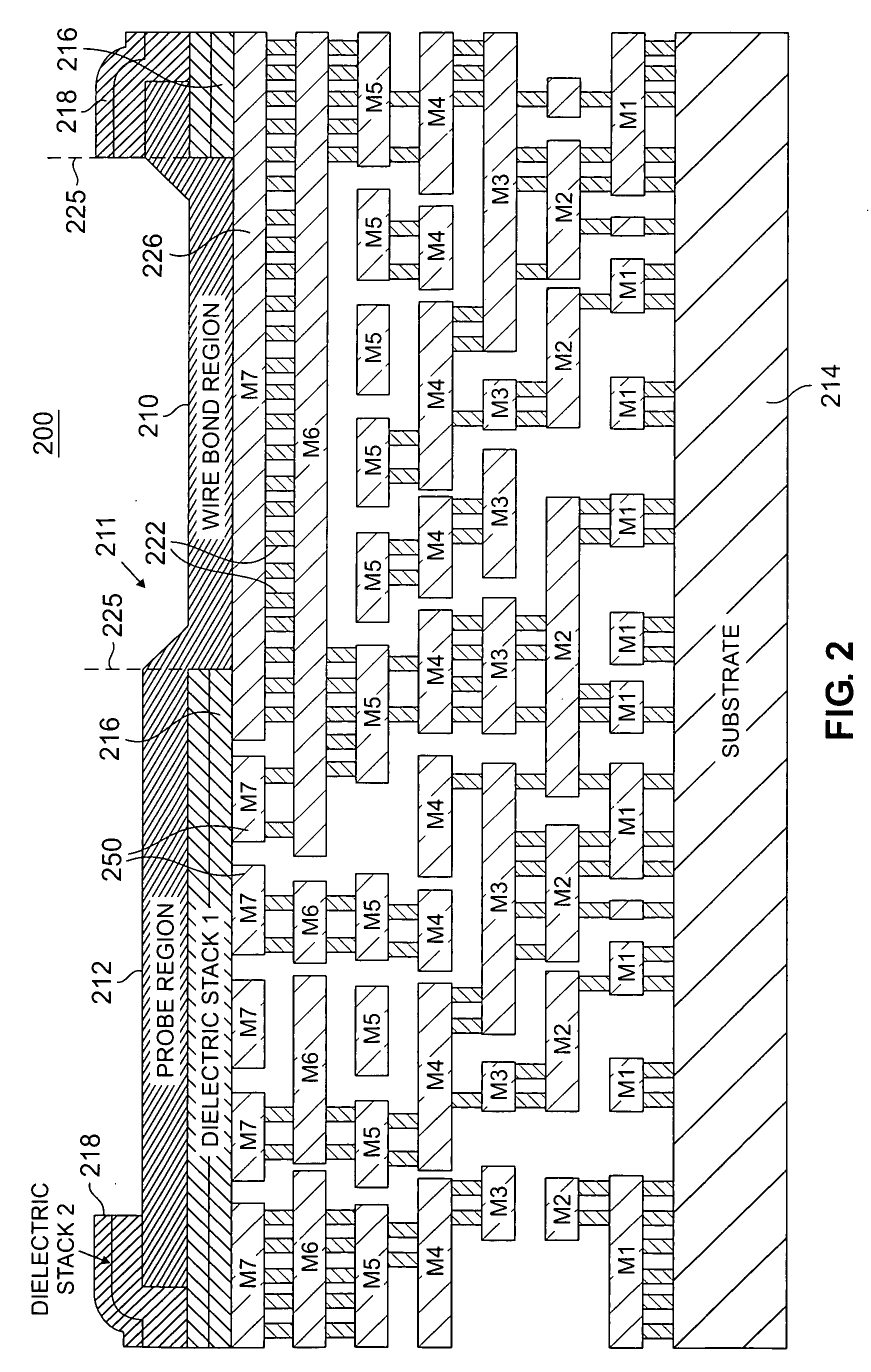Reinforced bond pad for a semiconductor device
- Summary
- Abstract
- Description
- Claims
- Application Information
AI Technical Summary
Benefits of technology
Problems solved by technology
Method used
Image
Examples
embodiment 300
[0027] In FIG. 2, metal layers M7 and M6, insulating layer 228, and metal features 222 form what is referred to herein as a 2 / 1 support structure. This is because there are two metal layers with one intervening dielectric region between a metal support regions, such as metal filled features 222. Turning to FIG. 3, the semiconductor device embodiment 300 has a 2 / 1 support structure similar to that of device 200. However, device 300 comprises a second outer passivation layer 318 which has been patterned to provide separating region 340 positioned on top of the bond pad 311. The provision of the separating region 340 serves to prevent probe tips from flowing over into the wire bond region 310 during probe testing. In addition, device 300 comprises a floating metal region 350 positioned under the probe region 312. The floating metal region 350 is derived from M7 and may be advantageous to use since it has a different potential than a conventional connected pad, shown as 250 in FIG. 2. T...
embodiment 500
[0029]FIG. 5 shows a semiconductor device embodiment 500 of the subject invention wherein metal layers M6, M7 and M8 for a 3 / 2 support structure, i.e., three metal layers with two metal filled features with intervening dielectric positioned between M5 and M6, M6 and M7. The bond pad has separate wire bond 510 and probe 512 regions that are separated by separating region 540 formed from second passivation layer 518. The probe region is supported by a floating metal pad 540 that is mesh patterned as described above.
embodiment 600
[0030] The semiconductor device embodiment 600 shown in FIG. 6 comprises a bond pad 611 comprising a wire bond region 610 and a probe region 612. The wire bond region 610 and probe region 612 are contiguous and coplanar, wherein the probe region 612 generally does not cover a first passivation layer 616. Separating the wire bond region 610 and the probe region 612 is a separating region 640 formed from a second passivation layer 618. The probe region 612 is generally supported by dielectric material 655 immediately subjacent to the probe region 612. The support structure subjacent to the wire bond region 610 is a 2 / 1 structure formed from metal layers M6 and M7 and intervening dielectric and metal filled features 628.
[0031]FIG. 7 shows a semiconductor device embodiment 700 similar to embodiment 600 wherein the bond pad 711 comprises a coplanar and contiguous wire bond 710 and probe 712 regions. However, device 700 comprises a 3 / 2 support structure under wire bond region 710 formed f...
PUM
 Login to View More
Login to View More Abstract
Description
Claims
Application Information
 Login to View More
Login to View More - R&D
- Intellectual Property
- Life Sciences
- Materials
- Tech Scout
- Unparalleled Data Quality
- Higher Quality Content
- 60% Fewer Hallucinations
Browse by: Latest US Patents, China's latest patents, Technical Efficacy Thesaurus, Application Domain, Technology Topic, Popular Technical Reports.
© 2025 PatSnap. All rights reserved.Legal|Privacy policy|Modern Slavery Act Transparency Statement|Sitemap|About US| Contact US: help@patsnap.com



